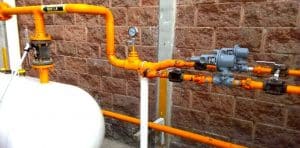Do you have a metal that you would like to mark? What are the most effective systems or methods to mark each type of metal? How to avoid problems and get professional results when marking your metal?
Marking the metal is an important part of producing a industry marking efficient and precise metal.
However, unlike wood and other craft materials, it's not as easy to get a visible line to stay on the surface. You need to consider what type of metal you are working with, as well as the tools you are using in the process and what type of project they are suitable for. How to mark a metal and what are the best methods to mark your metals?
There are several methods of marking measurements on metal. In the list below, we'll explore the best types of tools and give some tips on how to mark a type of metal based on its hardness or specific physical qualities, as well as the best way for each project's needs.
Mark the metal with a permanent marker
This method is by far the simplest and most direct. It is very likely that you already have a permanent marker and maybe now you are reading this because you had some problems. If a permanent marker didn't work for you before, chances are there was some dirt, dust, residue, or maybe some kind of lubricant or oil on the metal.
If the metal you're working with is new and clean, there's no reason you can't just use a permanent marker. As long as you give it time to dry, the marker won't rub off easily. If this doesn't work, you can clean the metal and try again or try another method.
Another problem you can run into with permanent marker is that they usually won't produce very fine lines.
When a permanent marker just won't work or runs out of ink, there are additional options for making simple marks when working with metal. And fortunately, none of them require much technical knowledge.
metal engraving with scribe
If a permanent marker doesn't work for you, another option is to use a tool called a scribe. This method may not work for every metal project you're working on because it scratches the metal, but it will be a perfect option if your plan is to cut or grind the metal at the marked spot.
A scribe can be used for all kinds of purposes, but its main use is to mark lines on metal. The tool in its simplest form is a metal pick. Sometimes they have handles or are built into pens, some of them become compasses to mark circles.
An advantage of using a scribe instead of a permanent marker is that it will usually be more precise and will make a cleaner line.
The only problem some find when scribing is that sometimes the scratch line on the metal is too faint and can be hard to see. If this is your case, then the following method might help you with the problem.
Use a scribe and permanent marker on metal
When you can't see a scribe's mark clearly and the permanent marker doesn't produce precise lines. Using the two together can provide an excellent solution.
To accentuate a scribe's mark, write a patch in the general area where your measurement is. Once you have a permanent ink patch, take your measurement and use a scribe to mark a line through the ink and onto the metal. This will result in a much more visible line produced by the scribe.
This method will still require the marker to not rub off easily. If you find that you find it too difficult to keep track of your marks because of this, then you may find another product more useful.
Mark metal with soapstone
Soapstone is often used by welders when they need to make marks on the metal they are working on.
Soapstone can be used for marking metal and is a natural material similar to chalk, which can also be used for marking. However, the main difference is that soapstone will not burn in the high temperatures of soldering and will be a bit more difficult to accidentally clean.
While marks made with it are heat resistant, it's still fairly easy to clean or erase with a damp cloth. Soapstone can be purchased as a type of pen or marker applicator or in its raw form.
Silver stripe pencils for marking metals of welders
Another good tip for welders is to use a silver-streaked pen or pencil. These pens are similar to soapstone in that the marks they make will not burn or rub off easily. They will also write on dirty metal unlike a permanent marker.
This product claims that it will not be easily wiped or blown away and also has the great feature of being reflective during welding which will make it easier to see when the user is wearing a mask or goggles.
Silver-lined pencils can usually be sharpened in the same way as a regular pencil and can be purchased in multi-packs.
Conclution
The perfect metal marking media depends on what your project is and the results you need.
Marking measurements on metal to be cut or welded is much simpler than engraving or putting designs on a finished product. Whatever your project, hopefully these tips can shed some light on the different options that are available to metal workers who need to mark their medium in a variety of ways.


